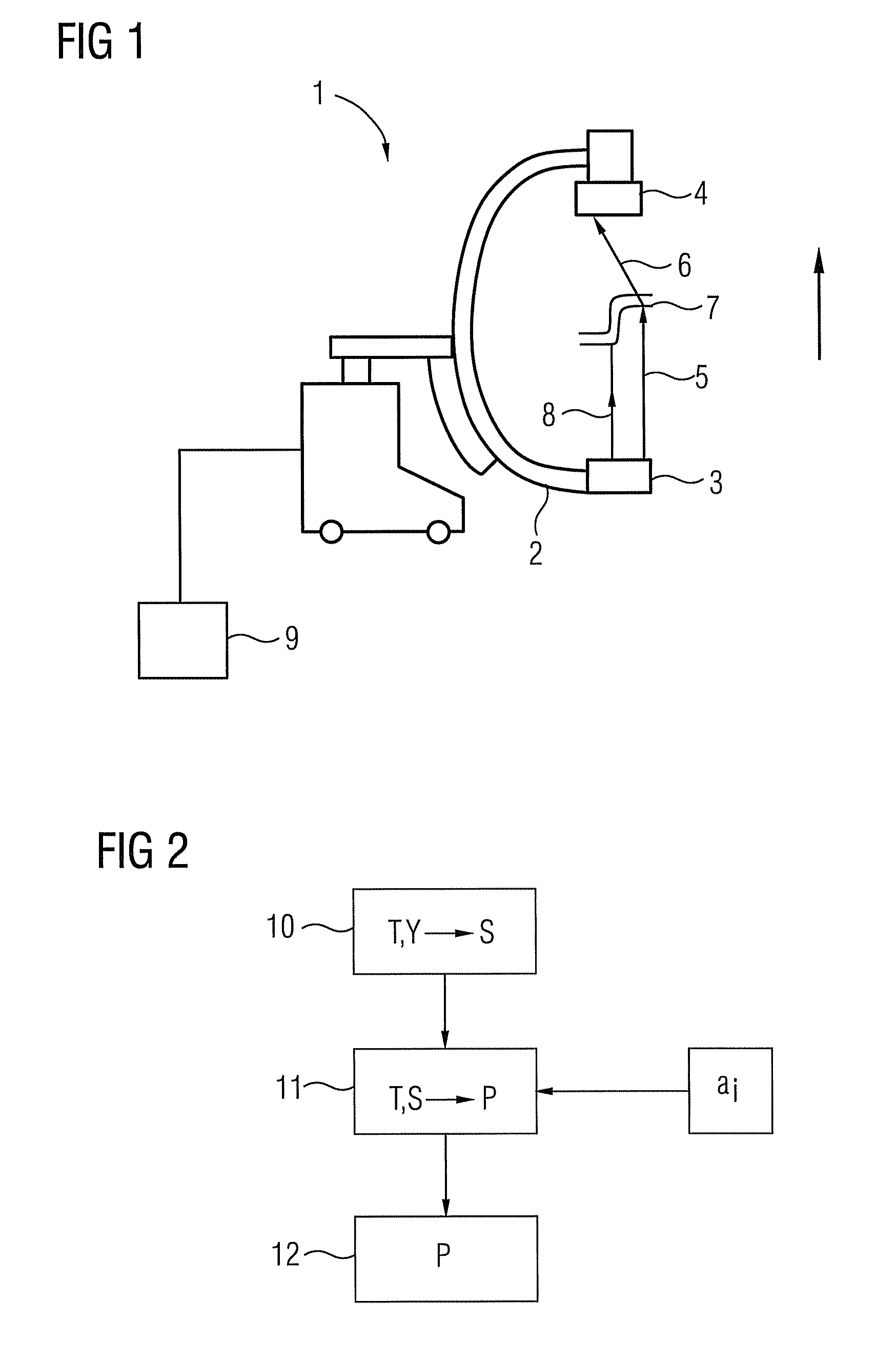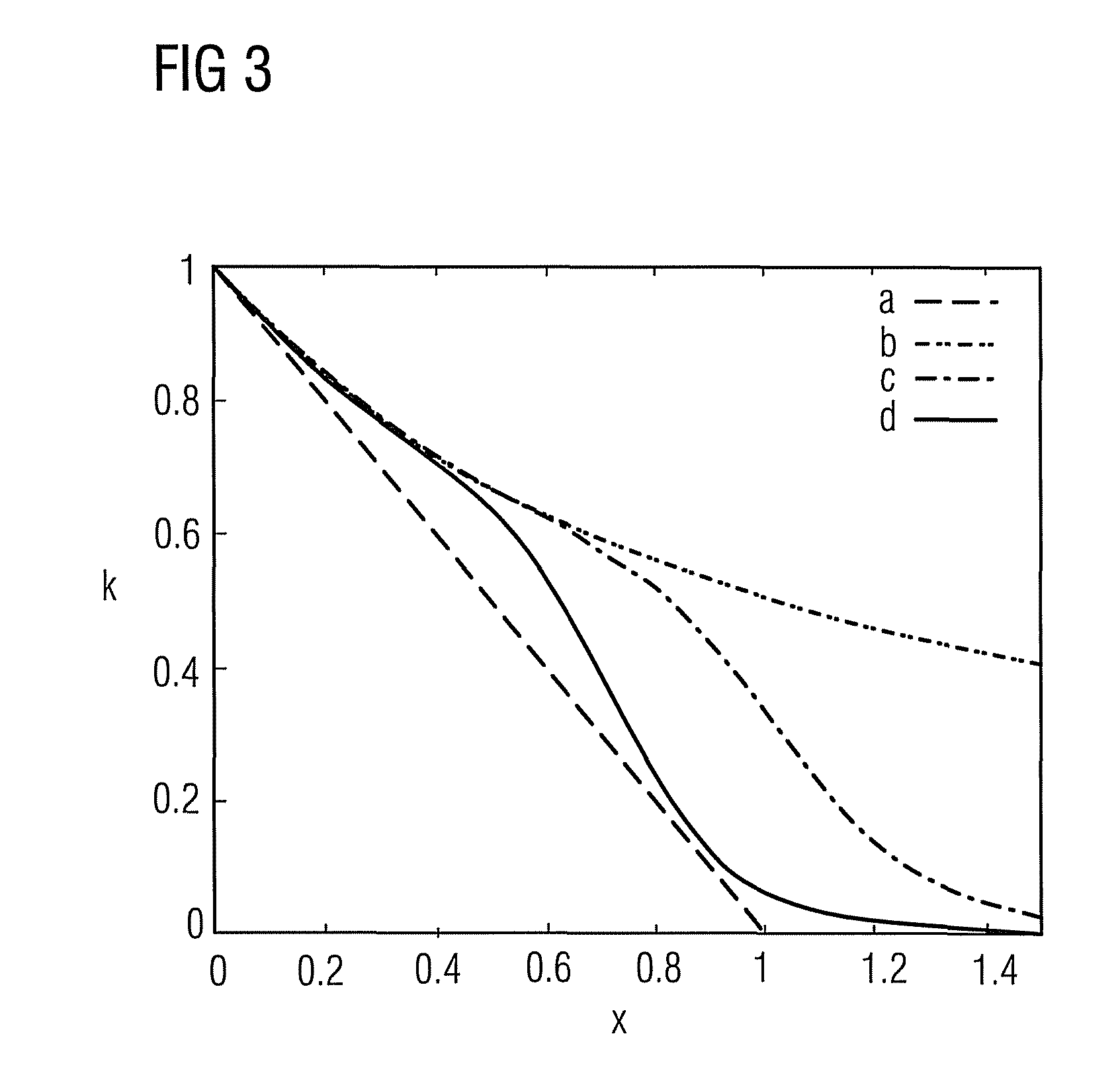Method for evaluating an image dataset acquired by a radiation-based image acquisition device
a radiation-based image and image dataset technology, applied in calibration apparatus, instruments, handling using diaphragms/collimeters, etc., can solve the problems of large algorithm execution problems, small number of iteration steps used in actual methods, and so on. , to achieve the effect of improving the quality of three-dimensional images, reducing the number of horizontal artifacts, and improving the accuracy of image processing
- Summary
- Abstract
- Description
- Claims
- Application Information
AI Technical Summary
Benefits of technology
Problems solved by technology
Method used
Image
Examples
Embodiment Construction
[0032]FIG. 1 shows the schematic diagram of an image acquisition device 1 according to the invention, in this case a C-arm CT device. It comprises a C-arm 2 opposite which are disposed a radiation source 3 and a radiation detector 4. Image acquisition may now produce scatter effects, as indicated by the beams 5 and 6 shown by way of example. However, the beam 5 is scattered at a schematically represented object 7 such that the corresponding scattered beam 6 nevertheless reaches the detector 4 where a scatter background signal is measured accordingly. Normally the ratio of scatter background signal to actual image signal is relatively small. This changes, however, if an object to be scanned runs, for example, horizontally (i.e. in the radiation direction), as indicated centrally in the case of the object 7. Then the largest part of the radiation 8 is absorbed, so that only a very small intensity is measured as the image signal. The consequence of this, however, is that the quotient o...
PUM
| Property | Measurement | Unit |
|---|---|---|
| CT | aaaaa | aaaaa |
| flexible | aaaaa | aaaaa |
| focal length | aaaaa | aaaaa |
Abstract
Description
Claims
Application Information
 Login to View More
Login to View More - R&D
- Intellectual Property
- Life Sciences
- Materials
- Tech Scout
- Unparalleled Data Quality
- Higher Quality Content
- 60% Fewer Hallucinations
Browse by: Latest US Patents, China's latest patents, Technical Efficacy Thesaurus, Application Domain, Technology Topic, Popular Technical Reports.
© 2025 PatSnap. All rights reserved.Legal|Privacy policy|Modern Slavery Act Transparency Statement|Sitemap|About US| Contact US: help@patsnap.com



